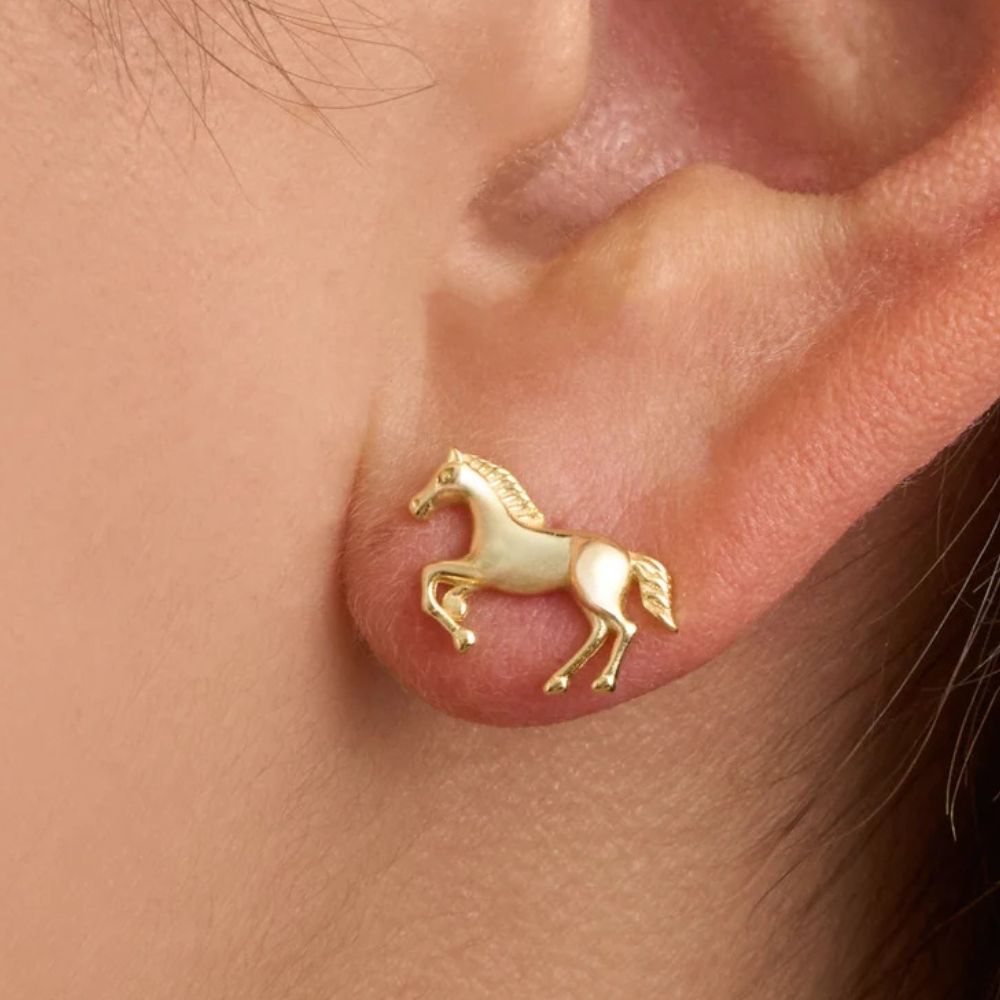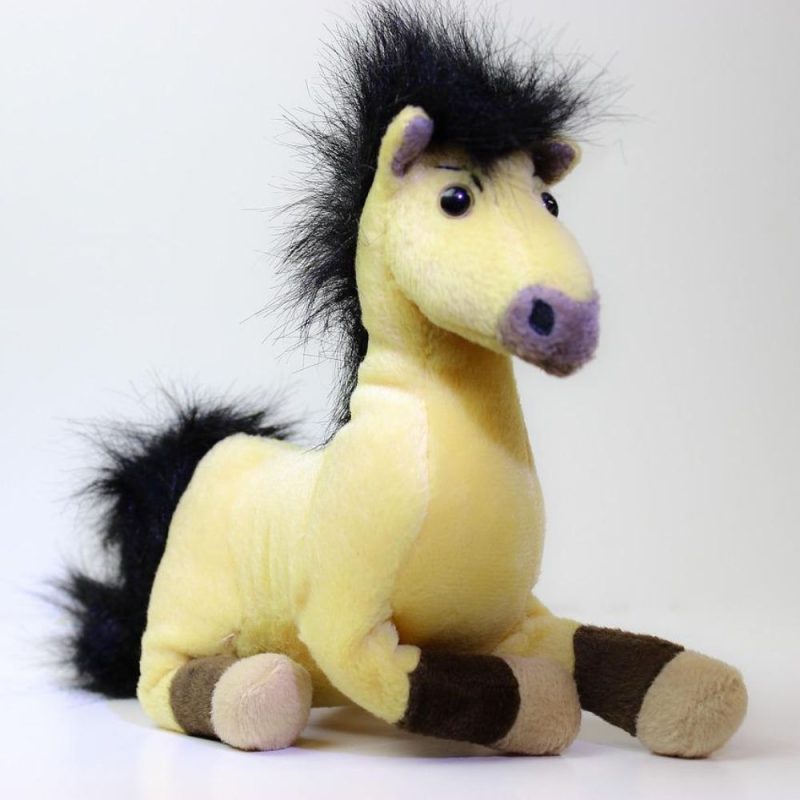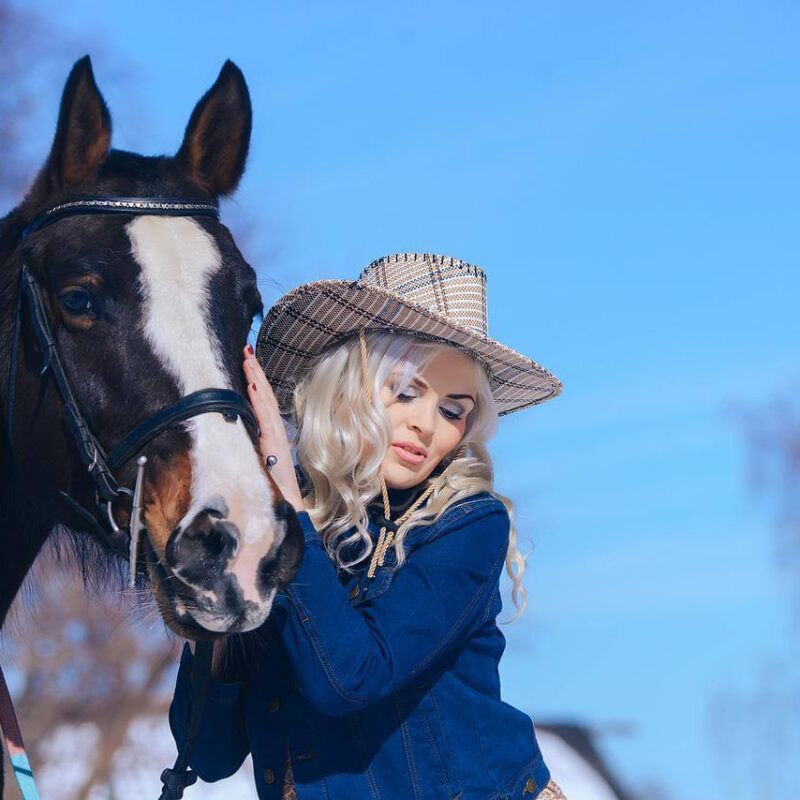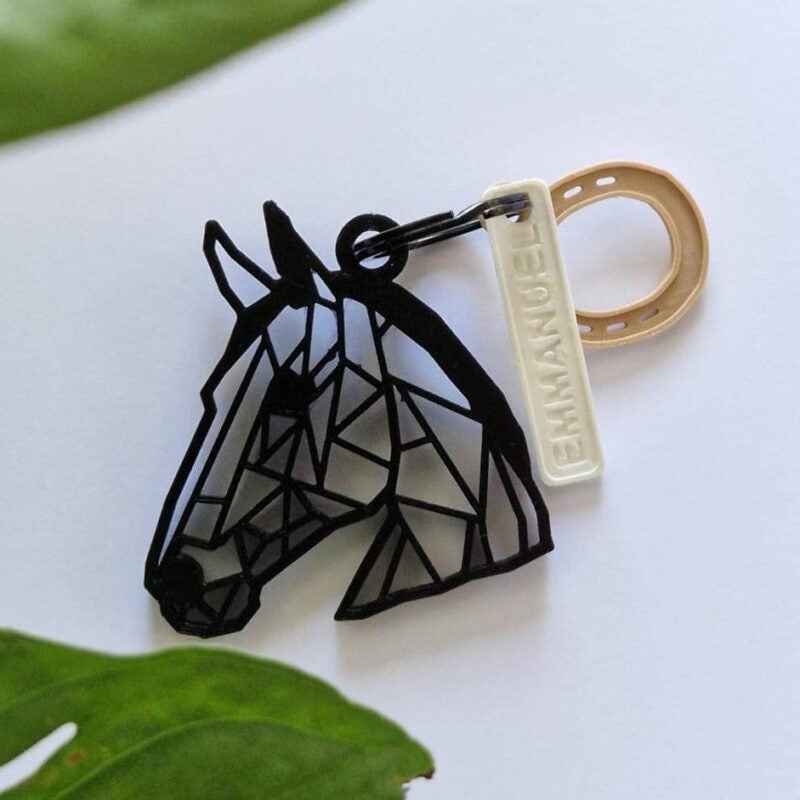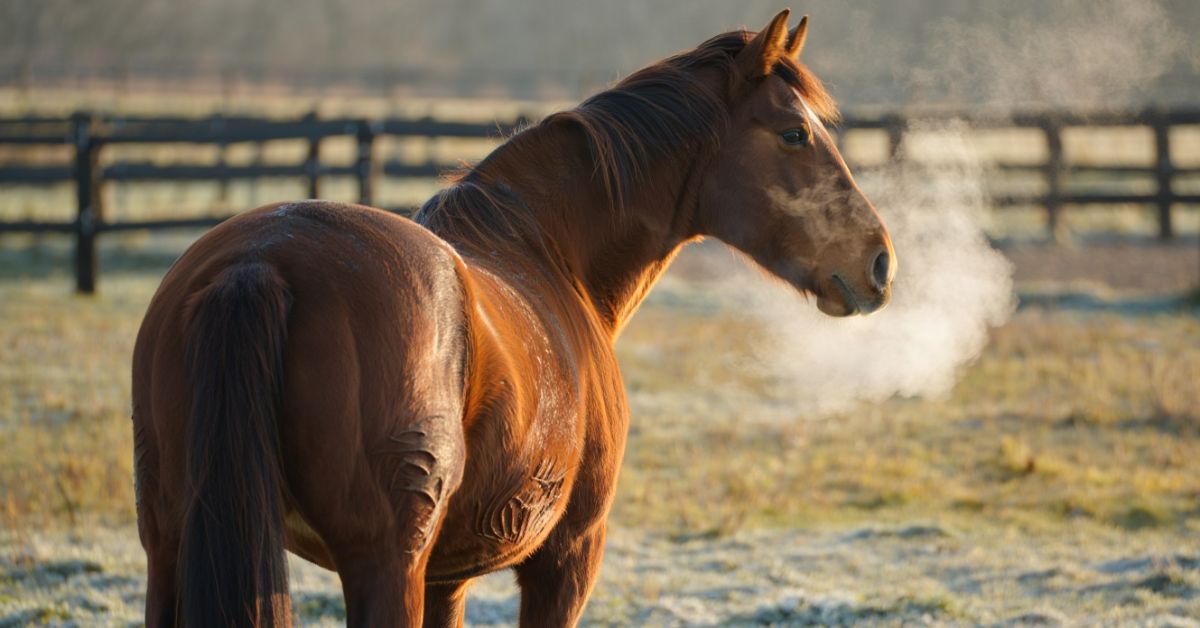
What Are Shivers in Horses: Understanding This Neurological Condition
Shivers in horses is a progressive neurological disorder that affects many equines worldwide, causing distinctive muscle tremors and abnormal movements, particularly in the hindquarters. If you've ever noticed your horse lifting its leg and holding it in an unusual flexed position with visible shaking, you might be witnessing equine shivers. This condition, also known as shivers syndrome horse, primarily manifests as involuntary muscle contractions and horse muscle tremors that can significantly impact your horse's movement and quality of life.
Understanding what causes shivers in horses is crucial for every horse enthusiast, whether you're a seasoned rider adorning yourself with our exquisite equestrian jewelry or a newcomer to the equestrian world decorating your space with our beautiful equestrian decoration pieces. This comprehensive guide will walk you through everything you need to know about signs of shivers in horses, helping you recognize, understand, and manage this condition while expressing your unique style as a dedicated horse lover.
Chapter 1: Recognizing the Signs and Symptoms of Shivers
Understanding the Classic Presentation
Horse shivers symptoms are unmistakable once you know what to look for. The most characteristic sign is hindquarter shivers, where affected horses exhibit a distinctive pattern of horse lifting leg twitching movements. When asked to back up or move sideways, horses with classic shivers will lift their hind leg high, hold it in a flexed position, and display visible trembling or shaking.
The condition typically affects the hindlimbs more severely than the front legs, though some horses may show hoof shaking horse behavior in all four limbs. Dr. Sarah Mitchell, a renowned equine neurologist, states: "Shivers presents as a constellation of symptoms that, once recognized, becomes quite distinctive from other neurological conditions."
Key Symptoms to Watch For:
-
Trembling hind legs when backing up or turning
-
Difficulty maintaining normal hind leg position
-
Horse muscle tremors that worsen with certain movements
-
Unusual horse movements during grooming or hoof care
-
Progressive worsening of symptoms over time
Differentiating from Similar Conditions
It's essential to distinguish shivers vs. stringhalt, as these conditions can appear similar to the untrained eye. While stringhalt causes an exaggerated upward flexion of the hind leg during forward movement, equine shivers primarily manifests during backing up, turning, or when the horse is asked to hold a limb in a flexed position for hoof care.
Horse gait abnormalities associated with shivers are most noticeable during specific maneuvers rather than during normal forward locomotion. This distinction is crucial for proper shivers diagnosis horse procedures and subsequent treatment planning.
Chapter 2: Understanding the Causes and Risk Factors
The Mystery Behind Shivers Development
What causes shivers in horses remains partially enigmatic, but research conducted between 2018 and 2022 has revealed several contributing factors. The condition is believed to be a equine neurological disorders with both genetic and environmental components affecting the nervous system's ability to control muscle function properly.
Recent studies indicate that shivers horse genetics play a significant role, with certain bloodlines showing higher predisposition. Draft horses and warmbloods appear more susceptible, suggesting breed-related genetic factors influence development of this horse neurological diseases.
Environmental and Nutritional Factors
Nutritional support for shivers has gained attention as researchers discovered connections between diet and symptom severity. Horses with inadequate vitamin E and selenium levels often show more pronounced symptomatic shivers. Additionally, shivers and PSSM (Polysaccharide Storage Myopathy) frequently occur together, suggesting shared metabolic pathways.
The relationship between shivers horse diet and symptom management has become increasingly important. Horses receiving balanced nutrition with appropriate vitamin and mineral supplementation often show slower progression of progressive shivers symptoms.
Age and Activity Level Impact
Most horses develop equine shivers between ages 5-15, with symptoms typically becoming noticeable gradually. Interestingly, highly athletic horses seem more prone to developing this condition, possibly due to increased demands on their neurological systems during intense training periods.
Chapter 3: Diagnostic Approaches and Veterinary Assessment
Professional Evaluation Process
Achieving an accurate shivers diagnosis horse requires comprehensive veterinary examination by professionals experienced in equine neurological disorders. The diagnostic process typically involves observing the horse during specific movements and maneuvers designed to elicit characteristic responses.
Veterinary neurology horse specialists employ various techniques to differentiate shivers from other conditions. They'll assess hindlimb flexion responses, evaluate muscle tone, and observe the horse's reactions during backing exercises and lateral movements.
Diagnostic Criteria and Testing
The veterinarian will look for several key indicators:
-
Shivers hindlimb flexion responses during backing
-
Horse trembling hind legs when weight-shifting
-
Progressive nature of symptoms over time
-
Absence of other neurological abnormalities
While no specific blood test exists for shivers, veterinarians may recommend testing for related conditions like PSSM or vitamin deficiencies that could contribute to horse muscle disease symptoms.
Importance of Early Detection
Early recognition of signs of shivers in horses allows for better management strategies. As noted by equine specialist Dr. James Robertson in 2021: "The sooner we identify shivers, the more effectively we can implement management protocols that maintain the horse's quality of life and slow progression."
Chapter 4: Treatment Options and Management Strategies
Medical Management Approaches
Currently, there's no cure for shivers horse treatment, but various management strategies can significantly improve affected horses' comfort and functionality. Managing shivers in horses focuses on symptom control, maintaining mobility, and preventing secondary complications.
Equine veterinary care protocols typically include regular monitoring, nutritional optimization, and exercise modification. Some veterinarians prescribe medications to help with muscle relaxation and neurological support, though results vary between individual horses.
Exercise and Physical Therapy
Exercise and shivers management requires careful balance. While complete rest isn't beneficial, modified exercise programs can help maintain muscle tone and joint flexibility. Light, consistent work often proves more helpful than sporadic intense sessions.
Shivers horse rehabilitation programs should include:
-
Regular walking exercises
-
Gentle stretching routines
-
Consistent turnout schedules
-
Avoiding stressful situations that worsen symptoms
Nutritional Support Strategies
Shivers horse diet optimization plays a crucial role in management. Providing adequate vitamin E (800-1000 IU daily) and selenium supplementation often helps reduce symptom severity. Ensuring consistent, high-quality forage and avoiding high-sugar feeds can also benefit horses with concurrent PSSM.
Alternative and Complementary Therapies
Alternative therapies for shivers are gaining popularity among horse owners seeking comprehensive management approaches. These may include:
-
Massage therapy
-
Acupuncture treatments
-
Chiropractic care
-
Herbal supplements
While scientific evidence for these treatments remains limited, many owners report subjective improvements in their horses' comfort levels.
➤ Also Read: Is a Bronco a Horse? Complete Guide for Equestrian Enthusiasts
Chapter 5: Prognosis, Long-term Care, and Living with Shivers
Understanding the Disease Progression
Progressive shivers typically worsens over time, though the rate of progression varies significantly between individual horses. Shivers horse prognosis depends on several factors, including age of onset, severity of initial symptoms, and effectiveness of management strategies.
Most horses with mild to moderate shivers can continue useful careers with appropriate modifications. However, severely affected horses may eventually require retirement from riding activities, though they can often continue comfortable pasture life with proper care.
Specialized Care Considerations
Hoof care for shivers horses requires special attention and patience. Farrier and shivers management involves working with professionals who understand the condition and can adapt their techniques accordingly. Some horses benefit from:
-
Shorter, more frequent trimming sessions
-
Sedation during hoof care when necessary
-
Modified handling techniques to minimize stress
-
Regular monitoring for secondary hoof problems
Supporting Your Horse's Quality of Life
Living with a horse affected by equine health issues like shivers requires dedication and understanding. Regular veterinary monitoring, consistent care routines, and environmental modifications can significantly impact your horse's well-being.
Creating a supportive environment includes providing consistent daily routines, minimizing stressful situations, and ensuring your horse has companionship and mental stimulation. Many owners find that their horses with shivers continue to enjoy life and maintain strong bonds with their human companions.
Research and Future Developments
Research on equine shivers continues advancing our understanding of this complex condition. Current studies focus on genetic markers, nutritional interventions, and potential therapeutic targets. Scientists are investigating the relationship between horse muscle disease mechanisms and neurological function, hoping to develop more effective treatments.
Recent research conducted in 2023 suggests that early intervention with specific nutritional protocols may slow disease progression, offering hope for future management improvements.
Frequently Asked Questions on Shivers in Horses
What exactly are shivers in horses?
Shivers in horses is a progressive neurological condition characterized by involuntary muscle tremors and abnormal limb positioning, particularly affecting the hindquarters. Horses with equine shivers display distinctive shaking movements when backing up, turning, or having their legs handled.
How can I tell if my horse has shivers?
Key signs of shivers in horses include horse lifting leg twitching, trembling hind legs during specific movements, difficulty backing up smoothly, and unusual horse movements during grooming or hoof care. The symptoms typically worsen when the horse is asked to flex its hindlimbs or maintain awkward positions.
Is shivers in horses treatable?
While there's no cure for shivers syndrome horse, the condition is manageable through proper equine veterinary care, nutritional support, modified exercise programs, and appropriate environmental management. Managing shivers in horses focuses on maintaining quality of life and slowing disease progression.
Can horses with shivers still be ridden?
Many horses with mild to moderate equine shivers can continue light riding activities with appropriate modifications. However, the shivers horse prognosis varies, and some horses may eventually require retirement from regular riding due to progressive symptoms.
What causes shivers to develop in horses?
What causes shivers in horses involves multiple factors, including genetic predisposition, nutritional deficiencies, and possibly environmental triggers. Shivers horse genetics play a significant role, with certain breeds showing higher susceptibility to this equine neurological disorders.
Express your passion for horses and assert your individuality with our carefully curated collection of equestrian jewelry and decorative pieces. At Dream Horse, we understand that your love for horses extends beyond the barn – let our products help you showcase your equestrian lifestyle wherever you go.










